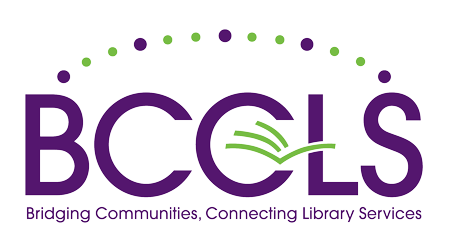
Nail-Biting Nonfiction
January 2015
When I was in high school I thought that history was a very dull, dry subject. Memorizing facts out of a textbook was boring to me, and I never felt attached to any of the people or places that we learned about. It wasn’t until I was out of college that I realized history could actually be interesting. Though I normally avoided nonfiction, I picked up The Perfect Storm by Sebastian Junger when it was published in 1997. Critics lauded it as gripping and ‘unputdownable’ -- and they were right. Junger does a terrific job of bringing the story of how the Andrea Gail was lost at sea during a massive 1991 storm to life.
After that, I discovered that I liked to read about disasters, accidents and engineering mishaps. (I’m sure Freud would have a field day with that). The best disaster books that I’ve read use primary source documents and interviews with survivors to make us readers identify with the folks who survived the calamity. Authors who research and write about disasters also have the advantage of hindsight, and can analyze and explain the complex factors (human or meteorological) that affect the situation.
We can so easily forget how powerful Mother Nature is, and as our memories fade we begin to think it can’t happen to us… and then it does (think Hurricane Sandy, as just one example).
Here are some of my favorite books about disasters.

The Worst Hard Time: the untold story of those who survived the great American dust bowl by Tim Egan (2006)
Not all disasters end quickly. The tragedy of the Dust Bowl, which originated from ill-thought farming practices in the 1920s, lasted for over 10 years and destroyed much of the ecology of the Great Plains. Egan takes a look at the causes of the disaster, uses personal diaries and interviews with people who lived through the time period, and brings this devastating disaster alive for his readers.

Divine Wind: the history and science of hurricanes by Kerry A. Emanuel (2005)
What weather factors contribute to creating a deadly hurricane? Why were hurricanes so difficult to detect and predict, well into the 20th century? In this book you’ll find lots of interesting weather knowledge as well as overviews of hurricanes like the one at Galveston in 1900, during which anywhere between 8,000 and 12,000 people were killed.

Surviving Survival: the art and science of resilience by Laurence Gonzales (2012)
People react to trauma differently, and surviving a disaster can change your worldview entirely. This book includes the stories of several people who have survived disasters, and the various ways they have coped.

Flight 232: a story of disaster and survival by Laurence Gonzales (2014)
In 1989 a United Airlines flight from Colorado to Chicago crash-landed in Sioux, City, Iowa, bursting into a giant fireball as it slammed into the runway. Bystanders doubted anyone could survive the crash and inferno, but miraculously, 184 of 296 passengers lived. Through interviews with pilots, passengers, rescue personnel, and the investigators who were tasked with figuring out what had gone wrong, Gonzales paints a vivid portrait of this terrifying experience.

The Children’s Blizzard by David Laskin (2004)
After a cold and brutal winter, people in the Great Plains were delighted when January 12th dawned warmer and sunny. Many people took advantage of the respite from winter to go into town, do chores, and go to school. They were completely unprepared when the temperature plummeted to -20 degrees, bringing high winds and heavy snow. Many schoolteachers had dismissed school early so that children could get home safely, and unfortunately many of the children got caught in the blizzard. The death toll was 235.

Fukushima: the story of a nuclear disaster by David Lochbaum, David, Edwin Lyman and Susan Stranahan (2014)
The tsunami that slammed into Japan in March 2011 not only killed thousands of people, but also damaged the aging and vulnerable Fukushima Daiichi nuclear plant. Japanese public officials believed that the reactor had adequate safety in place, but over the next few weeks, the world watched helplessly as the fail-safes failed, cooling systems shut down, and the plant went into meltdown mode. This book, written by two nuclear scientists and a journalist, is a riveting account of the process through which things went so very, very wrong.

Curse of the Narrows by Laura M. MacDonald (2009)
In 1917, two ships collided in the port of Halifax, Nova Scotia. One of them, the Mont Blanc, was fully loaded with explosives bound for the war effort in Europe. When the ships collided, a fire ignited on the Mont Blanc and the crew, with no way to warn anyone what was coming, evacuated. Minutes later, the ship exploded. The force of the blast was the largest pre-atomic explosion in history, and it was heard up to 200 miles away. Thousands of people were injured or killed, and much of the city was completely flattened. Rescue efforts began immediately, but were hampered by the blizzard that struck the city less than 24 hours later. MacDonald’s skillful use of primary sources expertly brings this tragedy to life.

Atomic Accidents: a history of nuclear meltdowns and disasters by James A. Mahaffey (2014)
Warning: this book may make you nervous. Nuclear power is something that, no matter how much we try, we cannot always control, and we cannot always foresee and prepare for every possible circumstance.

Superstorm: nine days inside Hurricane Sandy by Kathryn Miles (2014)
This harrowing book is especially interesting to those of us who lived through Sandy and experienced its aftermath. Miles chronicles many of the decisions made by government officials and their impact, interweaving explanations of the meteorological phenomena that led to Sandy as well as personal stories of survival and tragedy.

The Unthinkable: who survives when disaster strikes -- and why by Amanda Ripley (2008)
From the book jacket: “Today, nine out of ten Americans live in places at significant risk of earthquakes, hurricanes, tornadoes, terrorism or other disasters. Tomorrow, some of us will have to make split-second choices to save our families and ourselves. How will we react? What will it feel like? Will we be heroes or victims?”

Sudden Sea: the great hurricane of 1938 by R. A. Scotti (2003)
The United States Weather Bureau first predicted that this hurricane would strike Florida and then, as it moved north up the coast, they issued hurricane warnings for the Carolina coasts. But the storm did not follow the expected path, and it barreled up the coast, passing over Long Island and Rhode Island before veering inland. Meteorologists at the Weather Bureau had conflicting opinions of the path of the storm, so they didn’t issue warnings and few people had time to evacuate or take precautions. The storm killed over 600 people and damaged or destroyed over 57,000 homes. This is a riveting account of one of the most damaging hurricanes in New England history.

A Paradise Built in Hell: the extraordinary communities that arise in disaster by Rebecca Solnit (2009)
Solnit reviews several disasters throughout history, from the 1906 earthquake in San Francisco to 9/11, and Hurricane Katrina. She discusses the sense of community felt by survivors, sharing stories of how most people do come together to support one another in the aftermath of disaster, contrary to the often-held popular opinion that chaos and lawlessness reign.
List created by:
Mary C. Martin
Branch Manager, Dennis Memorial Branch, Sussex County Library System

